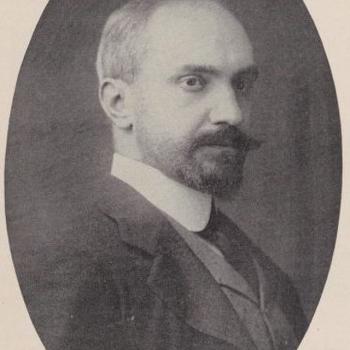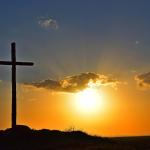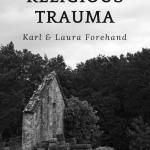
On Easter Sunday 2019, over 200 people have been killed and 450 wounded after deadly attacks on three churches and luxury hotels in Sri Lanka.
Most of the lives claimed were from those attending Easter Sunday services* at the churches.
At this time, we do not know all parties responsible for these terrorist attacks. We await to find out if these atrocities were the result of domestic or international plots. The attacks have prompted more people to look closely at Sri Lanka’s tumultuous ethno-religious history and present affairs.
Buddhists represent the religious majority with 70.2% of Sri Lankan followers. The religious minorities consist of Hindus (12.6%), Muslims (9.7%), Roman Catholics (6.1%) and Protestant Christians (1.3%).
The three largest ethnic groups in Sri Lanka are Sinhalese (74.9%),Tamils (15.4%) and Sri Lankan Moor (9.3%) with several other ethnic groups making up 0.5% of the population.
Open Doors USA, a nonprofit dedicated to serving persecuted Christians throughout the world, listed Sri Lanka as #44 in their 2018 watch list of the 50 countries that are highest in Christian persecution.
Similarly, a joint report by National Christian Evangelical Alliance of Sri Lanka (NCEASL), The Centre for Human Rights and Development (CHRD), and Minority Rights Group International (MRG), revealed:
Religious and ethno-religious minorities are particularly susceptible to violations of religious freedom. For instance, since the election of the new government, the National Christian Evangelical Alliance of Sri Lanka (NCEASL) has documented a total of 132 incidents faced by Christians belonging to both Sinhala and Tamil ethnic groups. Similarly, the Secretariat for Muslims has documented over 141 incidents against the Muslim minority… Over 50 reported incidents from a total of 90 incidents in 2015 involved the participation of State officials. High-level police officials such as the Senior Superintendent of Police and the Assistant Superintendent of Police have been directly involved in a number of incidents.
To give a more robust picture of the violations, below, I list examples of religious intimidation and oppression compiled from The United States Department of State’s Sri Lanka 2017 International Religious Freedom Report:
March (No date): Group of approximately 50 people, including Buddhist monks, force entry into a Christian church in Ingriya after a Sunday service. The group threatens members of the congregation, demands their names, and tells them to stop holding services. After the church files a complaint, a mob surrounds the pastor’s home and smashes the windows.
April (No date): 30 Buddhist monks and a group of villagers surround a church in Devinuwar in Matara District, yelling death threats, grabbing Bibles from members of the congregation, and threatening to destroy the church if services continued.
May (No Date): 30 – 40 Buddhist monks lead a mass of 2,000 in a demonstration, threatening to destroy the church in Devinuwar in Matara District.
May 15: Firebombing of a mosque in the Colombo suburb of Panaduraand.
May 16: Attack on a mosque in Colombo suburb of Kohilawatte.
May 16: A monk who is head of a temple with six acres of land, allegedly attempts to claim an additional 49 acres of land cultivated by local Muslim farmers. Over 1,000 Muslim villagers move en masse to a nearby village overnight, fearing for their safety.
April 29: Assault on two Jehovah’s Witnesses in Ridigama, North Central Province.
May 17 and 18: Three Muslim shops in Wennappuwa set on fire.
May 19: Firebombing of a mosque in Manarapitiya in Central Province.
May 21: Attack on a mosque in Kurunegala.
May 20 and 21: Three Muslim-owned shops in Beruwal in Southern Province, Maharagama in the Western Province, and Ampara in Eastern Province set on fire.
May 23: Firebombing of Muslim-owned pharmacy in Navinna in Western Province.
June (No date): Lakshan Dias, a human rights activist and lawyer, flees to Singapore “after stating on television there had been more than 190 attacks on evangelical Christian groups since the current government came to power.”
June 2: Four Molotov cocktails thrown at a mosque in Manayaweley in Eastern Province.
June 3: Firebombing of Muslim-owned pharmacy in Nugegoda in Western Province.
June 5 and 6: Muslim-owned shops in Nugegoda and Maharagama in Western Province set on fire.
June 7: A Muslim-owned bakery in Maligakanda in Western Province set on fire.
July 11: Villagers from Illangaithurai in the Eastern Province break into the Jesus’ Touch Church during a prayer meeting. Villagers assault the pastor and drag him outside the church.
August 23: Stones thrown at two mosques in Kurunegala.
September 27: The interview board of a government school in Kurunegala denies a child admission because of Assemblies of God Church membership.
November 17: Mob damages dozens of Muslims’ homes and approximately two mosques in arson attacks in Ginthota.
Closing: All Religions on the Table
As more information unfolds about these attacks, if we are going to address terror or peace, then all religions are on the table. It is neither Islamophobic, anti-Christian, nor anti-Buddhist to recognize when any segment of a religious institution acts as a source of oppression and terror.
We can no longer use these labels, personal biases, and politics to keep up us from dealing the realities impacting billions of lives.
In other words, we must face a problem to effectively remedy it.
No religious institution represents the sole source of global peace or violence. Because institutions consist of individuals, we have the power to join others in promoting inclusion of diverse beliefs in our world.
One thing is certain that I cannot say enough: The hate must stop.
*People of different beliefs celebrate Easter, often, as a time to focus on their family and friends. For various Christians, it is a time to celebrate the resurrection of Jesus Christ, who is central to the religion.
 Universal Design Update: Access to Audio of this Post
Universal Design Update: Access to Audio of this Post
I am awaiting more information about the possibility of text to speech options directly on this blog.
Thanks to advances in Universal Design, more tools are available to those who want audio access to this blog, other content at Patheos, or text on the world wide web.
To the best of my knowledge, currently, the following offer a text to speech options for accessing online written content (This is not an exhaustive list):
iPhone
Android
Macbooks
Macs
iPads
Chromebooks
Safari and Google Chrome
Because computer and digital technology change at a swift pace, please check with the provider of your devices and browsers for the most up-to-date directions to use these features on your computers, laptops, and mobile devices.
















